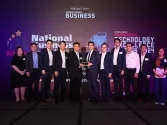
How can Vietnam limit coal reliance?
Its goals to boost renewable energy and limit coal reliance for 2030 have been approved through the Power Development Plan VIII (PDP8).
The next hurdle Vietnam has to face is the bankability of its renewable energy projects, as these are currently held back by market regulations. Physical hazards brought about by climate change should also be considered since these hazards, coupled with delays in the transition to renewables, pose risks to energy security, growth, and development.
Given these, Vietnam might face significant risks, considering that its neighbouring countries might continue to prosper whilst they lag behind, McKinsey & Company said.
To address this, Vietnam can get investors who are avoiding investing solely in China by deploying more renewables amidst customers’ increasing demand. With this, Vietnam will earn the potential to be a regional champion for installed renewable capacity and sustainable manufacturing.
Both the public and private sectors must work immediately to maximise Vietnam’s opportunity for growth. To ramp up renewable energy production for both business opportunities and Vietnam’s sustainability, here’s what companies can do, according to McKinsey & Company.
Commit to a multi-GW pipeline
Focused on the local ecosystem, this can help incentivize the local workforce and unlock supplier investment. Costs can also be lowered through economies of scale.
Commit to offtake through DPPAs
Through Direct Power Purchase Agreements, commercial and industrial customers could guarantee demand and offtake if they are willing to spend on green premiums for renewable electrons.
Reduce costs through standardised design
Different sites can use one standardized optimized design to achieve rapid commissioning amidst lower costs once developers and suppliers commit to a scale pipeline.
Embrace downstream green technology
To accelerate their renewable-energy journey, developers can invest in green technology in the form of green hydrogen or eclectic-vehicle charging. For consumers, green technology uptake must also be considered.
Whilst faced with pressure and challenges, Vietnam can still achieve its ambitious PDP8 goals. The public sector must be clear in the regulations to mitigate project risks. Meanwhile, the private sector shall commit to the large-scale transition to develop its renewable energy generation. This joint effort is key to a local renewable-energy ecosystem in the country.






![Cross Domain [Manu + SBR + ABF + ABR + FMCG + HBR + ]](https://cmg-qa.s3.ap-southeast-1.amazonaws.com/s3fs-public/styles/exclusive_featured_article/public/2025-01/earth-3537401_1920_4.jpg.webp?itok=WaRpTJwE)
![Cross Domain [SBR + ABR]](https://cmg-qa.s3.ap-southeast-1.amazonaws.com/s3fs-public/styles/exclusive_featured_article/public/2025-01/pexels-jahoo-867092-2_1.jpg.webp?itok=o7MUL1oO)









 Advertise
Advertise


